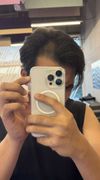community Wouldn’t it be funny if there already was a drug that existed which reactivated sleeping follicles? It would be our own version of Ozempic
PP405 shows promise for reactivating hair follicles, with potential maintenance using 5AR inhibitors. Current treatments like Minoxidil and finasteride are effective but have limitations, and there is hope for more effective solutions in the future.
